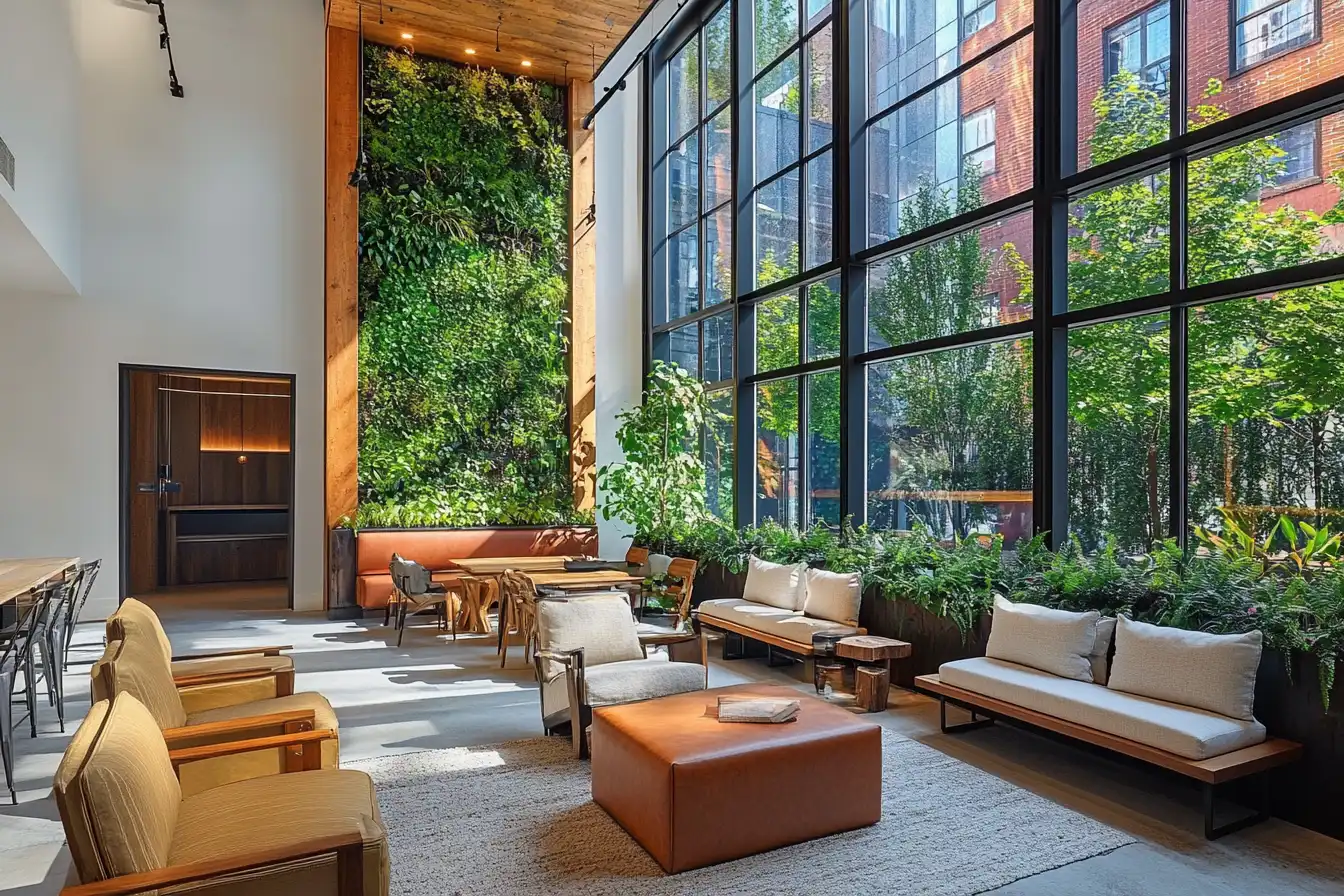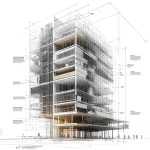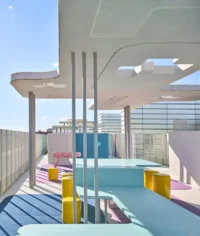Sustainable interior architecture isn’t just a trend; it’s a movement reshaping how we design our spaces. As we become more conscious of our environmental footprint, it’s essential to adopt practices that promote sustainability without compromising on style or comfort. From using eco-friendly materials to incorporating energy-efficient technologies, there’s a myriad of ways to create interiors that are both beautiful and kind to the planet.
In this article, we’ll explore the top sustainable interior architecture trends that are making waves in the design world. Whether you’re a homeowner looking to revamp your space or a designer seeking inspiration, these trends offer innovative solutions that marry aesthetics with sustainability. Let’s dive into the exciting world of green design and discover how we can make our interiors more eco-friendly and stylish.
Biophilic Design
Biophilic design connects us to nature by integrating elements from the natural world into interior architecture. This trend enhances well-being and promotes sustainability.
Integrating Nature Indoors
Incorporating nature indoors involves using natural materials like wood, stone, and plants to create a serene environment. Green walls, for example, add life and texture to spaces while improving air quality. Indoor water features, such as small fountains, can create a calming ambiance. These elements make interiors more inviting and harmonious.
Natural Light Maximization
Maximizing natural light reduces energy consumption and enhances the mood of spaces. Large windows, skylights, and glass doors allow sunlight to illuminate interiors. Reflective surfaces, like mirrors and light-colored paints, can amplify natural light and make rooms feel more spacious. Using automated blinds and smart glass can optimize light levels throughout the day.

Recycled and Upcycled Materials
Recycled and upcycled materials play a significant role in sustainable interior architecture. They not only reduce waste but also create unique, eco-friendly design elements.
Popular Recycled Materials
Recycled materials, like glass and metal, are essential in sustainable construction. Recycled glass can be transformed into countertops, tiles, and decorative pieces. Recycled metal finds applications in structural elements, light fixtures, and furniture. Reclaimed wood is another popular choice, offering a rustic, authentic look for floors, beams, and furniture. These materials reduce landfill waste and conserve natural resources.
Innovations in Upcycling
Upcycling innovations bring creativity and sustainability together. Designers transform old furniture into modern statement pieces and turn discarded textiles into stylish upholstery. Industrial waste, such as pallets and metal scraps, becomes functional decor items like bookshelves or wall art. These innovative approaches offer personalized design possibilities while promoting sustainability in interior spaces.
Energy Efficiency
Energy efficiency plays a crucial role in sustainable interior architecture, minimizing energy consumption and maximizing comfort.
Passive House Principles
Passive House standards focus on reducing a building’s energy usage. These principles include high-quality insulation, airtight construction, and strategic ventilation. For instance, using high-performance windows and doors enhances thermal performance. In addition to these, incorporating thermal mass materials like concrete and stone helps maintain stable indoor temperatures. By adhering to Passive House guidelines, a home can achieve significant energy savings and outstanding indoor air quality.
Smart Home Technology
Smart home technology enhances energy efficiency through automation and real-time monitoring. Devices like smart thermostats and lighting systems adjust based on occupancy and time of day, conserving energy. Installations of energy-efficient appliances, which often come with smart features, further reduce electricity usage. Additionally, home energy management systems provide insights into usage patterns, enabling homeowners to make informed decisions. Integrating these technologies makes our interior spaces more sustainable and efficient.

Adaptive Reuse
Adaptive reuse merges sustainability with creativity by repurposing structures for new functions. This trend preserves history, minimizes waste, and reduces environmental impact.
Historical Preservation
Historical preservation plays a crucial role in adaptive reuse. We retain the original character of buildings by integrating modern elements while respecting their heritage. For example, old factories can be transformed into stylish loft apartments by preserving exposed brick walls and industrial features. According to the National Trust for Historic Preservation, reusing and retrofitting existing structures can dramatically cut carbon emissions.
Modern Repurposing
Modern repurposing focuses on giving outdated or disused spaces new life with innovative designs. We see shopping malls converted into community centers, or old shipping containers turned into modular homes. This approach revitalizes communities, optimizes space, and supports environmental sustainability. A study by the U.S. Environmental Protection Agency highlights the benefits of reducing construction waste and resource consumption through modern repurposing efforts.
Indoor Air Quality
Indoor air quality is a fundamental aspect of sustainable interior architecture. Ensuring clean air inside buildings contributes to occupants’ health and overall well-being.
Non-Toxic Materials
Non-toxic materials play a critical role in maintaining indoor air quality. Using low-VOC (volatile organic compounds) paints, adhesives, and sealants helps reduce harmful emissions. Eco-friendly flooring such as bamboo, cork, and recycled wood provides safe alternatives to traditional materials. Furniture made from natural fibers and finished with water-based stains ensures minimal off-gassing, protecting indoor environments.
Ventilation Systems
Effective ventilation systems are essential for maintaining excellent indoor air quality. Incorporating energy recovery ventilators (ERVs) enhances air circulation while conserving energy. Installing HEPA (high-efficiency particulate air) filters in HVAC systems captures pollutants, allergens, and particles, ensuring cleaner air. Designing buildings with operable windows allows natural airflow, further improving ventilation. Integrating automated systems for real-time air quality monitoring enables proactive adjustments to maintain healthy indoor environments.
Overall, focusing on non-toxic materials and efficient ventilation not only promotes sustainability but also enhances the health and comfort of building occupants.
Water Conservation
Water conservation is a pivotal element of sustainable interior architecture. We focus on methods that reduce water usage and promote sustainability.
Efficient Plumbing Fixtures
High-efficiency plumbing fixtures significantly reduce water consumption. Low-flow faucets, showerheads, and toilets save water without compromising performance. For example, low-flow showerheads use about 2 gallons per minute (GPM) compared to traditional ones that use 2.5 GPM or more. Dual-flush toilets offer the option to use less water for liquid waste and more for solid waste, conserving water per flush.
Rainwater Harvesting Systems
Rainwater harvesting systems capture and store rainwater for later use, reducing reliance on municipal water. We can use rainwater for irrigation, flushing toilets, and even laundry. Installing a rain barrel or a more complex system with filtration and storage tanks helps conserve potable water. For instance, a properly designed system can capture 600 gallons of water from a 1,000 square foot roof during a 1-inch rainfall, providing a sustainable water source for various household needs.
Conclusion
Utilizing the latest sustainable interior architecture trends can significantly enhance both our living spaces and the environment. For instance, incorporating biophilic design not only connects us with nature but also improves our well-being. Eco-friendly materials like reclaimed wood and recycled metal reduce waste and promote resource efficiency.
Moreover, energy-efficient features such as LED lighting and smart thermostats minimize energy consumption, while escalating indoor air quality with non-toxic paint and VOC-free materials safeguards our health. Additionally, water conservation techniques like low-flow faucets and rainwater harvesting systems sustain precious water resources, integrating sustainability into our daily routines. Through these trends, we effectively align our interior spaces with our environmental values, fostering a greener future for us all.
- biophilic design trends
- Biophilic Interiors
- eco-friendly architecture trends
- eco-friendly design
- energy-efficient architectural designs
- Energy-Efficient Spaces
- environmentally friendly interior trends
- Green Architecture
- Green Design Trends
- green interior architecture
- Nature-Inspired Spaces
- recyclable materials in interior architecture
- sustainable interior design
- Sustainable Interiors
- Upcycled Design
- zero-waste interior design strategies

















Leave a comment